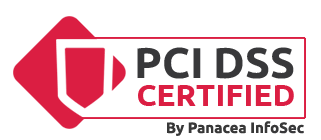In Singapore’s bustling digital economy, a seamless payment experience isn’t just a bonus—it’s a necessity. From ambitious startups to established enterprises, businesses are constantly seeking ways to optimize their payment processes, enhance security, and satisfy a diverse customer base. This is where payment orchestration comes in.
But what exactly is it, and why does it matter so much for businesses operating in Singapore and beyond? Let’s dive in.
What is Payment Orchestration?
At its core, payment orchestration is a technology layer that sits atop your existing payment stack. Think of it as a central hub that connects and manages all your various payment service providers (PSPs), gateways, and financial institutions through a single, unified interface.
Instead of your business having to integrate with each payment provider individually—a process that’s often complex, costly, and time-consuming—a payment orchestration platform (POP) acts as the single point of contact. It intelligently routes transactions, manages fraud, and provides a consolidated view of all your payment data.
This single API integration simplifies your entire payment infrastructure, allowing you to easily add new payment methods, providers, and functionalities without extensive development work.
How Payment Orchestration Works in Singapore’s Market
Here’s a step-by-step breakdown of how a payment orchestration platform streamlines the payment flow for a business in Singapore:
- Unified Checkout Experience: A customer visits your e-commerce site or app and chooses their preferred payment method. With a POP, you can easily offer a wide range of popular local and international options, such as PayNow, credit/debit cards (Visa, Mastercard, Amex), and various e-wallets.
- Smart Transaction Routing: The orchestration platform receives the transaction data and, using intelligent routing algorithms, decides the most optimal path for it to take. This decision is based on various factors, including:
- Success rates: Routing to the provider with the highest approval rate.
- Cost: Directing the transaction to the most cost-effective gateway.
- Performance: Choosing the fastest and most reliable provider to minimize latency.
- Location: Using a local gateway for a Singapore-based customer to improve success rates.
- Advanced Fraud and Security Management: Before a transaction is processed, the POP screens it for fraud using a combination of integrated tools. This centralized fraud management is crucial, as it provides a consistent security layer across all your payment providers. Payment orchestration platforms are also essential for maintaining compliance with standards like PCI DSS, ensuring customer data is handled securely.
- Real-Time Fallback and Retries: If a payment transaction fails with one provider, the platform can automatically and instantly re-route it to a different provider without the customer even noticing. This significantly increases your payment approval rates, reducing lost revenue from “soft declines” (temporary failures that can be resolved with a retry).
- Centralized Reporting and Reconciliation: All payment data from every provider is collected and presented in a single, easy-to-use dashboard. This eliminates the need for manual reconciliation across multiple systems, saving your finance team countless hours and providing clear, real-time insights into your business performance.
Run a business in Singapore?
Razorpay Singapore offers a secure, easy-to-use payment platform that helps you accept payments online via cards, e-wallets, PayNow, and more—backed by trusted local partners and global payment capabilities.
Why Payment Orchestration Matters for Singapore Businesses
Adopting a payment orchestration strategy provides several key advantages that are particularly relevant to the Singaporean market.
1. Increased Revenue and Higher Conversion Rates
By offering a diverse range of payment methods and ensuring a smooth checkout experience, you’re more likely to convert browsers into buyers. Smart routing helps to reduce failed payments, directly impacting your bottom line.
2. Simplified Scalability and Global Expansion
For businesses looking to expand beyond Singapore, payment orchestration is a game-changer. It allows you to quickly enter new markets by easily integrating with local payment providers and currencies. This agility means faster time-to-market and a competitive edge.
3. Reduced Operational Costs and Complexity
Managing multiple payment platforms can be a logistical nightmare. A POP unifies this process, reducing development costs, maintenance fees, and the overall complexity of your payment stack. You can also optimize costs by routing transactions to the most affordable provider.
4. Enhanced Customer Experience
In a market as competitive as Singapore’s, a frictionless customer journey is paramount. Payment orchestration ensures a fast, secure, and flexible checkout, allowing customers to pay how they want, boosting satisfaction and loyalty.
5. Robust Security and Compliance
The Monetary Authority of Singapore (MAS) has a stringent regulatory framework under the Payment Services Act (PS Act). Payment orchestration platforms, by centralizing security and compliance efforts, help businesses navigate these requirements, protect sensitive data, and mitigate risk effectively.
How Razorpay Singapore Helps
Razorpay’s platform provides a powerful solution for businesses in Singapore seeking to leverage the benefits of payment orchestration. With its Optimizer product, Razorpay enables businesses to connect with multiple payment processors through a single API integration. This allows for flexible and configurable rules that intelligently route transactions to the most optimal gateway based on success rates, cost, and other factors.
Razorpay’s platform helps businesses improve payment success rates, reduce transaction costs, and enhance performance. For businesses aiming to grow in Singapore and internationally, Razorpay supports a wide array of payment methods, including local options like PayNow and major international cards, ensuring a seamless checkout experience. The platform’s advanced fraud detection tools and PCI DSS Level 1 compliance provide a centralized security layer that helps businesses meet stringent regulatory requirements set by the Monetary Authority of Singapore (MAS).
Additionally, Razorpay’s unified dashboard offers real-time analytics, simplifying reconciliation and automating payouts. This helps to streamline financial operations, allowing businesses to focus on core growth strategies.
Conclusion
Payment orchestration is no longer a luxury but a strategic necessity for any business in Singapore aiming for sustainable growth. It provides the flexibility, security, and efficiency needed to thrive in today’s fast-paced digital landscape. By unifying your payment stack, you’re not just streamlining operations—you’re building a more resilient, customer-centric, and profitable business.
Frequently Asked Questions (FAQs)
What is the difference between a payment platform and payment orchestration?
A payment platform is a single tool that authorizes and processes credit card payments for a business. It’s an essential component of a payment system, but it operates independently. Payment orchestration, on the other hand, is a layer of technology that sits above multiple payment platforms. It acts as a central control panel, managing and optimizing the flow of transactions across all your connected platforms and other payment services.
Is payment orchestration only for large enterprises?
No. While payment orchestration is crucial for large enterprises with complex, international operations, it is also highly beneficial for small and medium-sized businesses (SMBs). An SMB in Singapore can use it to easily add new payment methods like PayNow, optimize for better approval rates, and simplify payment management without a large in-house development team. It provides a scalable solution that grows with your business.
How does payment orchestration improve customer experience?
Payment orchestration improves the customer experience by providing a wider variety of payment options, a faster and more reliable checkout process, and a consistent level of security. By ensuring transactions are routed to the most reliable gateways and fallbacks are in place, it minimizes frustrating payment failures and ensures a smooth, trust-inspiring journey for the customer.




